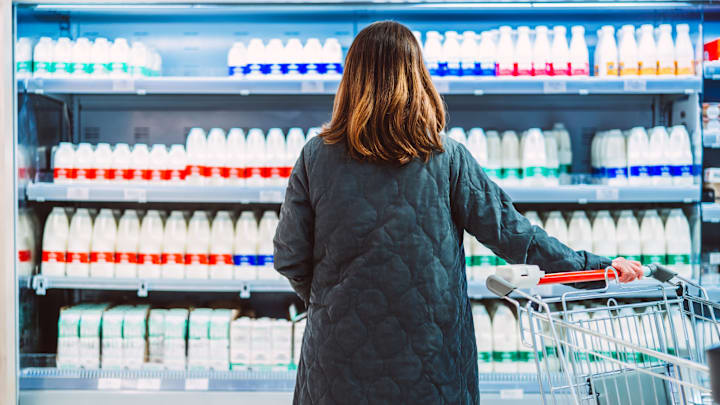One minute, you’re taking a quick trip to the grocery store for a handful of items. Next thing you know, you've left with a loaded shopping cart reminiscent of Supermarket Sweep.
Take milk, for example. It’s one of the most commonly purchased groceries, yet it’s located farthest from the front. Folks end up lugging their gallon past dozens of eye-catching products before making it to the counter, and usually, an eye-catcher (or two) ends up in their basket as a result.
It’s a scenario that happens all too often, and with entire aisles devoted to sweets, full floral displays, and a dizzying array of discounts, how can you not? You’re only human. And it turns out, it’s precisely that human-ness that’s being targeted. Most of the grocery stores we frequent have intentionally designed their layouts to serve a purpose: to entice consumers to spend, spend, spend.
Everything from lighting to scent and product placement affects how we spend our money. More often than not, these tactics are so subtle that they usually go unnoticed by buyers. But the more time you spend in a store, the more likely it is that you’ll purchase more stuff—including things you didn’t intend to buy. In retail, this concept is known as “building the basket.”
In a recent Real Simple article, consumer experts shed even more light on the secret (or not-so-secret) ways a store’s design and layout can influence our behavior. For instance, stocking sugary sweets at kids’ eye level, staging irresistible baked goods near the entrance, and putting meats and dairy products at the back are all intentional strategies. Even free samples are designed to be delicious detours. However, being aware of these temptations and learning to avoid them can help you curb all that impulse buying and overspending at the register.
While clever marketing techniques are undoubtedly used, some argue that the reasons aren’t always so deceptive. Michael Pollan, author of The Omnivore's Dilemma, suggested in a 2014 interview with NPR that it speaks more to logistics and efficiency than overt manipulation. Pollan, who advises readers to “shop the peripheries” in his 2010 book Food Rules: An Eater’s Manual, thinks the cold chain has a lot to do with supermarket layout, too. The cold chain refers to the process of maintaining refrigeration for foods such as meat and dairy at every stage of transportation. As delivery trucks generally unload at the back of a building, having the store’s refrigeration units near that area would make sense.
Whatever a company’s aim, though, making the most of your time, money, and food choices should be yours. Keeping these facts close in mind during your next shopping trip may be just what you need to stay on track. But it may also help to stick to supermarkets that offer the best value and check out some apps that make it easier to find big discounts as well.
Have you got a Big Question you'd like us to answer? If so, let us know by emailing us atbigquestions@mentalfloss.com.
